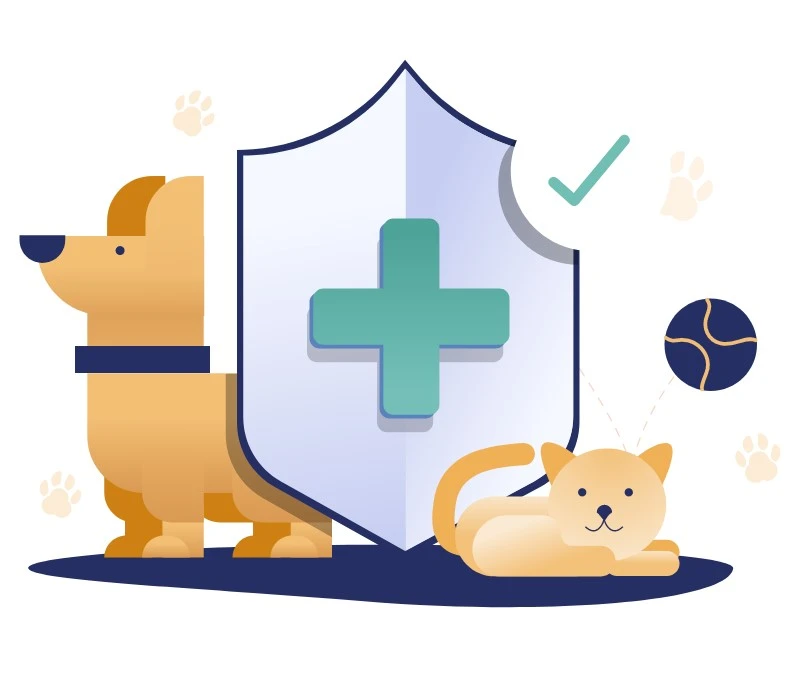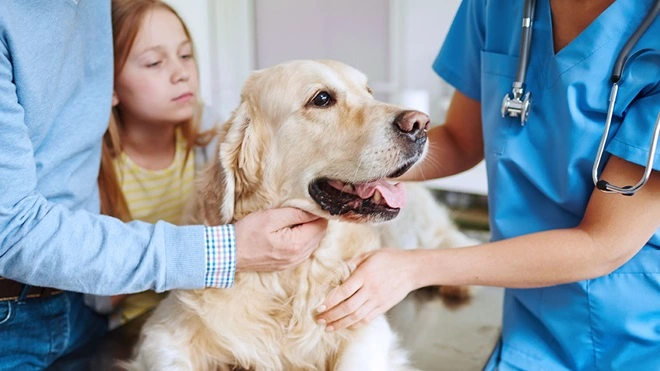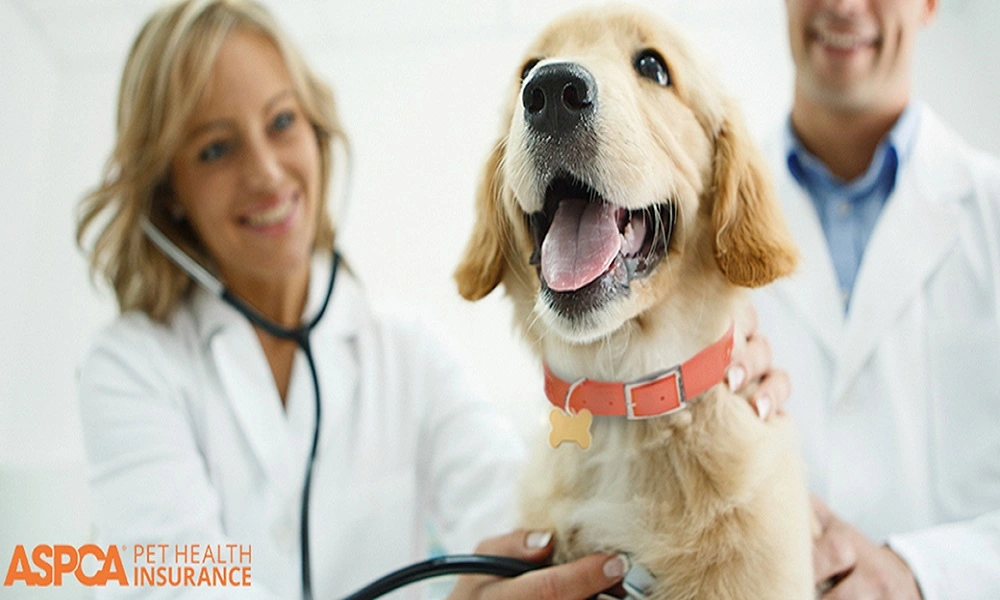The ASPCA is a well-known and respectable group that helps animals. They have a number of different pet insurance plans that can help you pay for emergency doctor care. This blog post will talk about the ASPCA pet insurance plans, including what they cover, how much they cost, and what other customers have said about them.
What does ASPCA Pet Insurance cover?
ASPCA Pet Insurance is a business that provides insurance for pets. There are many plans to pick from, so you should be able to find one that works for you and your cash. Their plans cover a lot of different medical costs, like those caused by accidents, illnesses, and routine checkups.
The ASPCA has three types of insurance plans for pets:
- Plans That Only Cover Accidents: These plans only cover accidents, like getting hurt in a car crash or a fall.
- Plan with Full Coverage: This plan covers accidents, sickness, and care to keep you healthy.
- Preventive Care Plan: This plan covers preventive care like shots, spaying or neutering, and checkups once a year.
ASPCA Pet Insurance cover a wide range of veterinary expenses, including:
- Crashes: Wounds from falls, car crashes, bites, swallowed objects, and poisonings.
- There are both big and small diseases, like cancer, arthritis, hypothyroidism, ear infections, digestive issues, and urinary tract infections (UTIs).
- Hereditary illnesses include hip dysplasia, intervertebral disc disease, and eye diseases.
- Behavior problems: problems like scratching things that aren’t meant to be scratched, making too many noises, and nervousness.
- You can get dental care like cleanings, tooth extractions, and other dental services.
- Alternative therapies include things like acupuncture, chiropractic care, and hydrotherapy as ways to treat certain illnesses.
In addition to these core coverages, ASPCA Pet Insurance also offers a variety of optional add-ons, such as:
- Preventive care: This plan will pay for some of the costs of preventive care, like yearly checkups, vaccines, flea and tick medicine, heartworm medicine, and screenings.
- Wellness exams: The cost of yearly wellness exams is covered by this plan, which can help find health problems early and stop them from getting worse.
- Spaying or neutering your pet: This service will pay for the cost of spaying or neutering your pet.
- The cost of microchipping your pet is covered by this policy, and you will get the money back.
The ASPCA Pet Insurance plans cover different things and cost different amounts based on the plan type, your pet’s age, breed, and where you live.

What does ASPCA Pet Insurance not cover?
The following doctor bills are not covered by ASPCA Pet Insurance:
- Conditions that happen before coverage starts or during a waiting time are called pre-existing conditions.
- Regular care includes things like checkups, nail trimming, and spaying or neutering.
- Cosmetic treatments include cutting off an animal’s tail, trimming its ears, and removing its claws.
- experimental treatments are ones that aren’t normally thought of as standard of care.
- When you breed your pet, there are costs involved, like artificial insemination and cesarean sections.
- Costs of suicide, cremation, or burial are all part of end-of-life care.
Carefully reading the policy is important to fully understand what is and is not covered. If you have any questions about certain coverages, you can also call ASPCA Pet Insurance’s customer service line.
How much does ASPCA Pet Insurance cost?
The price of ASPCA Pet Insurance changes based on a number of things, such as
- What kind of plan you pick: ASPCA Pet Insurance has three types of plans: Accident-Only, Full Coverage, and Preventive Care. Plans that only cover accidents are the least expensive, while plans that cover everything are the most expensive. If a cat owner wants to cover the cost of preventive care like yearly checkups and shots, Preventive Care plans are a good choice.
- How old your pet is: In general, younger pets cost less to cover than older pets. This is because pets that are younger are less likely to get sick.
- What kind of pet you have: Some breeds are more likely to get certain illnesses than others. This might make your insurance cost more or less. As an example, it costs more to cover purebred dogs than mixed-breed dogs.
- Where you live: The cost of medical care changes where you live. It will usually cost more to cover pets that live in places where the cost of living is high than pets that live in places where the cost of living is low.
The following table shows how much ASPCA Pet Insurance plans usually cost each month:
| Plan Type | Monthly Premium |
| Accident-Only | $10-$15 |
| Complete Coverage | $25-$50 |
| Preventive Care | $5-$10 |
Please keep in mind that these are just average rates. Your actual premium could be more or less than what was said above, based on those things. A free price from ASPCA Pet Insurance is the best way to get a good quote.

What do customers say about ASPCA Pet Insurance?
Customers have good things to say about ASPCA Pet Insurance. Google Reviews gives them an average score of 4.5 out of 5 stars. Customers like how helpful the company’s staff is, how many coverage choices they offer, and how cheap their prices are.
Here are some examples of good reviews that people have written about ASPCA Pet Insurance:
- “I am so glad I chose ASPCA Pet Insurance. They were able to help me cover the cost of my dog’s surgery after he got into an accident. I was so grateful for their help.” – John S.
- “I have been with ASPCA Pet Insurance for over 5 years and I have always been happy with their service. They have always been quick to process my claims and they have always paid me in full.” – Jane M.
- “I love that ASPCA Pet Insurance offers a variety of plans to choose from. I was able to find a plan that fits my needs and my budget.” – Sarah P.
Of course, some people have said bad things about ASPCA Pet Insurance as well. But there are usually more good reviews than negative ones.
Here are some examples of bad things that people have said about ASPCA Pet Insurance:
- “I was denied coverage for my dog’s pre-existing condition. I was very disappointed with this.” – Bill T.
- “I had a hard time getting my claims processed. It took several weeks for them to reimburse me for my dog’s vet bills.” – Mary A.
- “I think ASPCA Pet Insurance is too expensive. I was able to find a better deal with another pet insurance company.” – David K.
Overall, ASPCA Pet Insurance has a good reputation among its customers. The company has a high rating on Google Reviews and most customers are happy with their service. However, there are some negative reviews, so it is important to read the policy carefully before you sign up for a plan.
How can I get ASPCA Pet Insurance?
You can get ASPCA Pet Insurance in three ways:
- Online: You can get a free quote and enroll in a plan online at the ASPCA Pet Insurance website.
- Phone: You can call ASPCA Pet Insurance customer service at 1-800-267-7387 to get a quote and enroll in a plan.
- Agent: You can also contact an independent insurance agent to get a quote and enroll in an ASPCA Pet Insurance plan.
Here are the steps on how to get ASPCA Pet Insurance online:
- Go to the ASPCA Pet Insurance website: https://www.aspcapetinsurance.com/
- Click on the “Get a Quote” button.
- Enter your pet’s information, including their name, age, breed, and zip code.
- Review the different plans and select the one that is best for you.
- Enter your contact information and payment information.
- Click on the “Submit” button to complete your enrollment.
Here are the steps on how to get ASPCA Pet Insurance by phone:
- Call ASPCA Pet Insurance customer service at 1-800-267-7387.
- Tell the customer service representative that you are interested in getting a quote for pet insurance.
- Provide the customer service representative with your pet’s information, including their name, age, breed, and zip code.
- The customer service representative will review the different plans with you and help you select the one that is best for you.
- Provide the customer service representative with your contact information and payment information.
- The customer service representative will complete your enrollment for you.
Here are the steps on how to get ASPCA Pet Insurance through an agent:
- Contact an independent insurance agent to get a quote for ASPCA Pet Insurance.
- The agent will review the different plans with you and help you select the one that is best for you.
- The agent will complete your enrollment for you.
It doesn’t matter which way you choose; you should get your insurance information soon. After that, you can start taking your pet to the vet and getting your money back.

How Does ASPCA Pet Insurance Work?
ASPCA Pet Insurance works by providing reimbursement for veterinary expenses associated with accidents, illnesses, and preventive care. Here’s a breakdown of how the process works:
- Enrollment: You choose a plan that suits your pet’s needs and budget and provide your pet’s information, including age, breed, and health history.
- Waiting Period: For accident and illness coverage, there’s a waiting period of 15 days before coverage begins. Preventive care coverage starts immediately.
- Vet Visit: When your pet requires veterinary care, you take them to any licensed veterinarian in the U.S. or Canada.
- Payment: You pay for the veterinary services in full upfront.
- Claim Submission: You submit a claim to ASPCA Pet Insurance, providing receipts and itemized invoices from the veterinarian.
- Reimbursement: ASPCA Pet Insurance reviews your claim and, if eligible, reimburses you for a percentage of the covered expenses, based on your plan’s deductible and reimbursement rate.
More information about how ASPCA Pet Insurance works is given below:
- You pick a deductible amount, which is the amount of the covered costs you pay for yourself before your insurance starts to pay for the rest.
- Rate of repayment: You pick a repayment rate, which is the amount of covered costs that ASPCA Pet Insurance will pay back to you, up to the limit of your annual coverage.
- Annual Coverage Limit: The most that ASPCA Pet Insurance will pay you back for covered costs in a year is a certain amount.
- Preventive Care: You can add preventive care coverage, which will pay for services like yearly wellness exams and vaccines and reimburse you for them.
- Possible Add-ons: You can make your plan better by adding possible add-ons, like dental care coverage or coverage for alternative treatments.
If you know how ASPCA Pet Insurance works, you can make smart choices about your pet’s health care and get the most out of your insurance.
Guide on How to File an ASPCA Pet Insurance Claim
It’s easy to file a claim with ASPCA Pet Insurance. You can do it online, through their mobile app, or by mail. For each method, here are the steps:
Online Claim Submission:
- Visit the ASPCA Pet Insurance Member Center at https://www.aspcapetinsurance.com/.
- Log in to your account using your email address and password.
- Click on the “Claims” tab.
- Select the “Submit a Claim” option.
- Enter your pet’s information, including their name, date of birth, and breed.
- Select the type of claim you are submitting (accident, illness, or preventive care).
- Provide details about the veterinary visit, including the date, reason for the visit, and diagnosis.
- Upload itemized invoices and receipts from the veterinarian.
- Review the claim information and ensure accuracy.
- Click on the “Submit Claim” button.
Mobile App Claim Submission:
- Download and install the ASPCA Pet Insurance My Pet Insurance app from the App Store or Google Play.
- Open the app and log in to your account.
- Tap on the “Claims” icon.
- Select the “+” icon to start a new claim.
- Enter your pet’s information and select the type of claim.
- Provide details about the veterinary visit and diagnosis.
- Take photos of the itemized invoices and receipts.
- Review the claim information and ensure accuracy.
- Tap on the “Submit Claim” button.
Claim Submission by Mail:
- Obtain a claim form from the ASPCA Pet Insurance website or by calling customer service.
- Fill out the claim form completely, including your pet’s information, veterinary visit details, and diagnosis.
- Attach copies of itemized invoices and receipts from the veterinarian.
- Mail the completed claim form and attachments to:
ASPCA Pet Insurance P.O. Box 10012 Glendale, CA 91209-0012
Additional Tips:
- Keep thorough records of your pet’s medical history and trips to the vet.
- Send in your claims quickly, ideally no more than 90 days after the vet visit.
- Get in touch with ASPCA Pet Insurance’s customer service if you need help with your claim or have any questions.
When making a claim, make sure you have your pet’s name, age, and the date of the visit to the vet, along with your pet’s insurance policy number, on hand.

What is the best price for ASPCA Pet Insurance?
If you want full coverage for a low price, the ASPCA is a good choice for pet lovers. There are many plans to pick from, so you should be able to find one that works for you and your cash. They also have a good name with their customers.
A free price from the ASPCA is a great place to start if you are thinking about getting pet insurance.
Examples of pet owners who have been helped by ASPCA Pet Insurance
Here are some examples of pet owners who have used ASPCA Pet Insurance and been happy with it:
Case Study 1: Golden Retriever Max
Max, a Golden Retriever who is two years old, was playing fetch in the park when all of a sudden he yelled and started to limp. Max had torn a muscle in his knee, which was found when his owner, Sarah, took him to the vet. The surgery and healing cost more than $5,000. The good news is that Sarah had ASPCA Pet Insurance, which paid back 90% of the costs.
Case Study 2: Lucy, the Dog of Many Breeds
Lucy, a mixed-breed dog who is six years old, started having seizures. David, her master, took her to the vet, where they told him she has epilepsy. The prices of medicine and ongoing care added up to more than $1,000 a year. David was lucky because he had ASPCA Pet Insurance, which paid for 80% of the costs.
Case Study 3: The Cat Mittens
Mittens, a three-year-old cat, took a piece of tinsel in her mouth. When Emily, her owner, took her to the vet, they had to do surgery to get rid of the object. It cost more than $1,200 for the surgery. Emily was lucky because she had ASPCA Pet Insurance, which paid for 70% of the costs.
These are just some of the ways that ASPCA Pet Insurance has helped pet owners pay for unexpected vet bills. ASPCA cat Insurance is a good choice if you are thinking about getting cat insurance. There are many plans to pick from, so you should be able to find one that works for you and your cash. They also have a good name with their customers.
How Does ASPCA Pet Insurance Compare to Other Types of Pet Insurance?
This table shows how ASPCA Pet Insurance stacks up against other pet insurance companies:
| Provider | Accident-Only Coverage | Complete Coverage | Preventive Care Coverage | Monthly Premiums | Average Customer Rating | Reimbursement Rate | Deductible |
| ASPCA Pet Insurance | Yes | Yes | Optional | $25-$50 | 4.5 | Up to 90% | $250-$500 |
| Petco Insurance | Yes | Yes | Optional | $35-$60 | 4.2 | Up to 90% | $250-$500 |
| Embrace Pet Insurance | Yes | Yes | Optional | $40-$70 | 4.7 | Up to 90% | $250-$500 |
| Nationwide Pet Insurance | Yes | Yes | Optional | $35-$65 | 4.3 | Up to 90% | $250-$500 |
| Lemonade Pet Insurance | Yes | Yes | Optional | $25-$45 | 4.6 | Up to 90% | $250-$500 |
You can choose from a lot of different types of cat insurance, as you can see. Which provider is best for you will rely on your budget and needs.

When picking a pet insurance company, here are some things to think about:
Coverage
What kind of care do you need? Accident-only coverage is the simplest and least expensive choice, but it doesn’t cover sickness. It costs more to get full coverage, but it covers both accidents and sickness. You can choose to add preventive care benefits to your plan, which can help you save money on routine care like checkups and shots.
Monthly premiums
What amount of money can you pay each month? The amount you pay each month can change based on the insurance company, the type of coverage, and the age, size, and health history of your pet.
Average customer rating
What do other people who have used the service say about it? Online reviews can give you an idea of how good the customer service is and how well-known the company is.
Rate of reimbursement
What amount of your covered costs will the company pay back to you? You should think about this because it can change how much you have to pay out of pocket.
Deductible
Why do you want this plan? What is the deductible? Before your insurance company starts to pay you back, you have to pay a certain amount of money first. This is called the deductible.

How to get better deals on pet insurance
Here are some tips for saving money on pet insurance:
1. Pick a bigger amount.
Your monthly payment will be less if you raise your deductible. Because you will have to pay more out of your own pocket before your insurance company pays. But you should make sure you can pay the fee if you need to.
2. Pick a smaller rate of reimbursement
Most pet insurance plans let you pick from different payout rates, like 70%, 80%, or 90%. When it comes to paid costs, the higher the reimbursement rate, the more you will get back. This means that if the reimbursement rate is high, your monthly fee will also be high.
3. Pay once a year
If you can, pay your pet insurance fees once a year instead of every month. You will save money on interest this way.
4. Think about accident-only insurance.
Accident-only coverage might be a good idea if your pet is young and healthy. This kind of coverage costs less than full coverage, and if your pet gets hurt in an accident, it will pay for their medical bills.
5. Get several prices.
Get quotes from a few different pet insurance companies before you decide which one to go with. You can use this to find the best deal for your pet by comparing prices.
6. Use coupons to save money.
A lot of pet insurance companies will give you a discount if you have more than one pet, are in the military, or have your pet spayed or neutered.
7. Care to prevent
You can help keep your pet from getting sick in the first place by giving them good care. In the long run, this can help you save money on vet bills.
8. Make a plan for your health.
If you have a health plan, it can help pay for preventive care like yearly checkups, shots, and spaying or neutering your pet.
9. Look around.
There are different types of pet insurance with different prices based on your pet’s age, breed, and health background. Before you pick a plan, you should look around and compare prices.
In Conclusion
Pet insurance can be a good purchase for people who have pets. Being able to pay for unexpected vet bills with this insurance can give you peace of mind that your pet is safe.
If you choose ASPCA Pet Insurance, you’re not only protecting your pet’s health and well-being, you’re also encouraging responsible pet ownership, which is good for both animals and society as a whole.
We hope that this blog post has taught you some new things about ASPCA Pet Insurance. Feel free to leave a question or message below.
FAQs
What is the waiting period for ASPCA Pet Insurance?
For accident and illness coverage, there is a 15-day waiting period before coverage begins. This means that if your pet has an accident or illness within the first 15 days of their enrollment in the policy, you will not be covered.
When does the waiting period for preventive care start?
Preventive care coverage starts immediately, so you can start submitting claims for preventive care costs as soon as your pet is enrolled in the policy.
Are there any discounts available for ASPCA Pet Insurance?
Yes, ASPCA Pet Insurance offers discounts for several things, such as multiple pets, military service, and spaying or neutering your pet.
What is a deductible?
A deductible is the portion of the covered expenses that you pay before insurance kicks in. You can choose a deductible amount when you enroll in an ASPCA Pet Insurance policy.
What is a reimbursement rate?
A reimbursement rate is the percentage of covered expenses ASPCA Pet Insurance will reimburse you for, up to your annual coverage limit. You can choose a reimbursement rate when you enroll in an ASPCA Pet Insurance policy.
What is the deductible for ASPCA Pet Insurance?
You choose a deductible amount, which is the portion of the covered expenses you pay before insurance kicks in.
What is the reimbursement rate for ASPCA Pet Insurance?
You choose a reimbursement rate, which is the percentage of covered expenses ASPCA Pet Insurance will reimburse you for, up to your annual coverage limit.
How do I file a claim with ASPCA Pet Insurance?
You can file a claim online, through the mobile app, or by mail.
How long does it take to get reimbursed by ASPCA Pet Insurance?
ASPCA Pet Insurance generally completes claims in 30 days or less.
Can I cancel my ASPCA Pet Insurance policy?
Yes, you can cancel your ASPCA Pet Insurance policy at any time. However, you will not be refunded any unused premiums.
What is a pre-existing condition?
A pre-existing condition is a health condition that your pet had before they were enrolled in an ASPCA Pet Insurance policy.
How does ASPCA Pet Insurance handle pre-existing conditions?
ASPCA Pet Insurance does not cover pre-existing conditions, except for certain conditions that have been diagnosed within 15 days of your pet’s enrollment in the policy.
What if my pet develops a new pre-existing condition?
If your pet develops a new pre-existing condition after they are enrolled in an ASPCA Pet Insurance policy, the condition will not be covered.
What are the optional add-ons available for ASPCA Pet Insurance?
ASPCA Pet Insurance offers the following optional add-ons:
- Dental care coverage.
- Alternative therapies coverage.
- Spaying or neutering discounts.
How do I add optional add-ons to my ASPCA Pet Insurance policy?
You can add optional add-ons to your ASPCA Pet Insurance policy by contacting ASPCA Pet Insurance customer service.
Related Articles
- Otto Pet Insurance Review : What You Need to Know
- ASPCA Pet Insurance Plans: Review 2024
- Top-Rated Accident-Only Pet Insurances: A Comprehensive Guide
- Pets best insurance Review & Prices 2024
- Embrace Pet Insurance Review & Prices 2024
- Best and Most Affordable Pet Insurance 2024?
- Best Pet Insurance in Minnesota 2024
- Wishbone Pet Insurance 2024: A Review of What It Offers and How It Compares
- Paw Protect Pet Insurance Review 2024 | All you need to know
